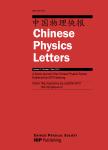Low-Temperature Growth of Polycrystalline silicon Films by SiCl4/H2 rf Plasma Enhanced Chemical Vapour Deposition
由 SiCl <SUB>4</SUB>/H<SUB>2</SUB> rf 血浆的多晶的硅电影的低温度的生长提高了化学蒸汽免职作者机构:DepartmentofPhysicsShantouUniversityShantou515063
出 版 物:《Chinese Physics Letters》 (中国物理快报(英文版))
年 卷 期:2003年第20卷第10期
页 面:1879-1882页
核心收录:
学科分类:080903[工学-微电子学与固体电子学] 0809[工学-电子科学与技术(可授工学、理学学位)] 08[工学] 080501[工学-材料物理与化学] 0805[工学-材料科学与工程(可授工学、理学学位)] 080502[工学-材料学]
基 金:国家973计划
主 题:多晶硅薄膜 低温生长 SiCl4/H2 等离子体增强化学气相沉积 PECVD 四氯化硅
摘 要:Polycrystalline silicon film was directly fabricated at 200°C by the conventional plasma enhanced chemical vapour deposition method from SiCl4 with H2 dilution. The crystallization depends strongly on the deposition power. The maximum crystallinity and the crystalline grain size are over 80% and 200-500 nm, respectively. The results of energy dispersive spectroscopy and infrared spectroscopy measurements demonstrate that the film is mostly composed of silicon, without impurities such as Cl, N, C and bonded H. It is suggested that the crystallization at such a low temperature originates from the effects of chlorine, i.e., in-situ chemical, etching, in-situ chemical cleaning, and the detachment of bonded H.



